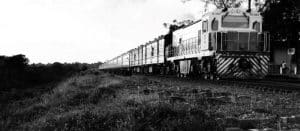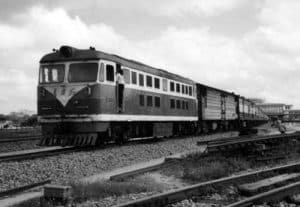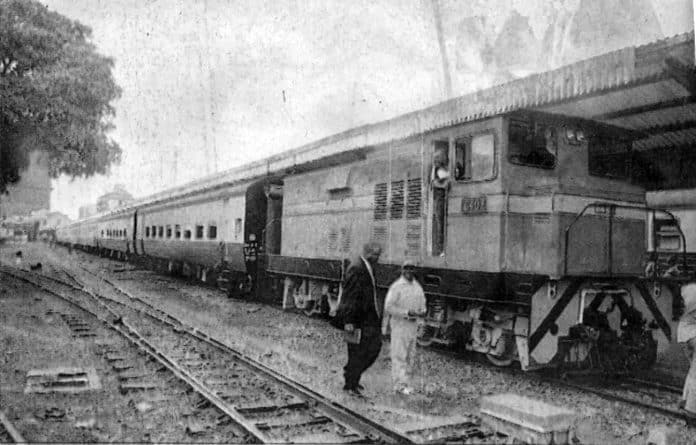Introduction to Lindi’s Coastal Rail History
Tucked away along Tanzania’s picturesque coastline, the town of Lindi holds a fascinating, yet often overlooked, chapter in the country’s rail history. Once a thriving hub for a extensive coastal rail network, Lindi’s rail legacy has faded into the shadows, overshadowed by the more prominent railway systems that crisscross the nation. However, for the discerning traveler, Lindi’s forgotten rail heritage offers a unique opportunity to delve into the past and uncover the untold stories that shaped the region’s transportation and economic landscape.
In this article, we will embark on a journey to explore the rise and fall of Lindi’s coastal rail system, its historical significance, and the challenges that led to its eventual decline. We’ll uncover the remnants of this forgotten network, rediscover the impact it had on the local community, and explore the efforts to preserve this important aspect of Tanzania’s rail heritage for future generations.
The Rise and Fall of the Coastal Rail System in Lindi
Lindi’s coastal rail system was once a vital artery that connected the region to the rest of Tanzania and the world beyond. Constructed during the colonial era, the railway line served as a crucial link for the transportation of goods, resources, and people, playing a pivotal role in the economic development of the area.
The construction of the coastal rail system in Lindi began in the early 20th century, driven by the need to facilitate the export of agricultural products and natural resources from the region. Over the years, the network expanded, connecting Lindi to other coastal towns and the interior of the country. At its peak, the coastal rail system in Lindi was a bustling hub, with trains carrying a diverse array of cargo, from sisal and cashew nuts to timber and minerals.
However, the glory days of Lindi’s coastal rail system were short-lived. The advent of road transportation and the gradual decline of the region’s agricultural and industrial sectors led to a steady decrease in the demand for rail services. By the late 20th century, the coastal rail network in Lindi had fallen into disrepair, with many sections of the tracks abandoned and the infrastructure crumbling.
Historical Significance of Lindi’s Coastal Rail System
Lindi’s coastal rail system played a significant role in shaping the region’s history and economic development. The construction of the railway lines not only facilitated the transportation of goods and resources but also had a profound impact on the social and cultural fabric of the area.
The rail system connected Lindi to the rest of Tanzania, fostering greater integration and interdependence between the coastal regions and the interior. This connectivity enabled the exchange of ideas, cultural influences, and economic opportunities, contributing to the region’s growth and transformation.
Moreover, the coastal rail system in Lindi was a testament to the engineering prowess and the colonial ambitions of the time. The construction of the railway lines, often through challenging terrain and harsh environmental conditions, was a remarkable feat of human ingenuity and determination.
Exploring the Forgotten Chapters of Lindi’s Rail History

Despite the decline of Lindi’s coastal rail system, the remnants of this once-thriving network still exist, offering a glimpse into the region’s rich rail heritage. Exploring these forgotten chapters of Lindi’s rail history can be a captivating and enlightening experience for the curious traveler.
One can venture to the abandoned railway stations, where the echoes of past activity still linger. The rusting tracks, overgrown with vegetation, serve as a poignant reminder of the once-bustling transportation hub. In these forgotten spaces, one can imagine the hustle and bustle of the past, the sounds of locomotive engines, and the stories of the people who once relied on the rail system for their livelihoods.
Rediscovering the Remnants of the Coastal Rail System
As you delve deeper into Lindi’s rail history, you’ll come across the remnants of the coastal rail system that once crisscrossed the region. These physical remnants, though often in a state of disrepair, hold the key to unlocking the untold stories of the past.
From crumbling railway stations to rusted train cars, the artifacts of Lindi’s rail heritage offer a tangible connection to the region’s history. By exploring these remnants, you can gain a deeper understanding of the challenges and triumphs that shaped the coastal rail system, and the impact it had on the local community.
Challenges Faced by the Coastal Rail System in Lindi
The decline of Lindi’s coastal rail system was not without its challenges. Several factors contributed to the gradual erosion of this once-vital transportation network:
- Infrastructure Deterioration: The lack of consistent maintenance and investment over the years led to the deterioration of the railway tracks, bridges, and stations. This made the system increasingly unreliable and unsafe for both passengers and cargo.
- Competition from Road Transport: The rise of road transportation, with its greater flexibility and accessibility, gradually eroded the dominance of the coastal rail system. As roads were built and improved, more people and businesses opted for the convenience of trucks and buses.
- Economic Shifts: The decline of Lindi’s agricultural and industrial sectors, which had been the primary drivers of the coastal rail system’s success, contributed to the decrease in demand for rail services. This economic shift ultimately undermined the viability of the rail network.
- Lack of Modernization: As the coastal rail system aged, it failed to keep pace with technological advancements and the evolving transportation needs of the region. This inability to adapt and modernize further exacerbated the system’s decline.
Impact of the Coastal Rail System on the Local Community
The coastal rail system in Lindi had a profound impact on the local community, shaping the social, economic, and cultural landscape of the region. The railway lines not only facilitated the transportation of goods and resources but also connected people, enabling the exchange of ideas, cultures, and economic opportunities.
The presence of the rail system provided employment opportunities for the local population, from railway workers and station attendants to vendors and service providers. The economic activities generated by the coastal rail network contributed to the overall prosperity of the region, supporting the livelihoods of many families.
Moreover, the coastal rail system played a crucial role in the region’s cultural identity. The trains became a symbol of modernity and progress, and the railway stations served as hubs of social interaction and community life. The rhythmic sounds of the trains and the bustling activity around the stations became ingrained in the collective memory of the local people.
Preserving Lindi’s Rail History for Future Generations
As the remnants of Lindi’s coastal rail system continue to fade, there is a growing recognition of the need to preserve this important aspect of Tanzania’s rail heritage. Efforts are underway to document, restore, and showcase the history of the coastal rail network, ensuring that its legacy is not lost to the sands of time.
Initiatives by local authorities, heritage organizations, and community groups aim to identify and restore the remaining railway infrastructure, transforming abandoned stations and tracks into historical sites and museums. These efforts not only preserve the physical remnants of the coastal rail system but also seek to capture the stories and memories of the people who were once a part of this vibrant transportation network.
Promoting Tourism through Lindi’s Rail Heritage
As the preservation of Lindi’s rail history gains momentum, the region has the potential to emerge as a unique tourist destination, offering visitors a chance to explore the forgotten chapters of Tanzania’s coastal rail network.
By developing heritage trails, guided tours, and interactive exhibits, Lindi can showcase the rich history and cultural significance of its coastal rail system. Visitors can experience the thrill of walking along the abandoned tracks, exploring the crumbling railway stations, and immersing themselves in the stories of the past.
Such initiatives not only preserve the region’s rail heritage but also have the potential to spur economic development through tourism. By attracting visitors interested in exploring Lindi’s rail history, the local community can benefit from the influx of resources, creating new employment opportunities and strengthening the region’s overall economic resilience.
Conclusion: Appreciating the Legacy of Lindi’s Coastal Rail System

Lindi’s coastal rail system may have faded from the spotlight, but its legacy continues to echo through the region’s history and landscape. This forgotten chapter of Tanzania’s rail heritage holds the power to captivate the curious traveler, offering a unique glimpse into the country’s past and the resilience of its people.
As you explore the remnants of Lindi’s coastal rail network, you’ll uncover the stories of the past, the challenges overcome, and the enduring spirit of a community that once thrived on the rhythmic sounds of the trains. By preserving and sharing this remarkable history, we can ensure that the legacy of Lindi’s coastal rail system lives on, inspiring future generations to appreciate the rich tapestry of Tanzania’s transportation heritage.
For more articles related to Railway and train travel Tanzania, click here!

































